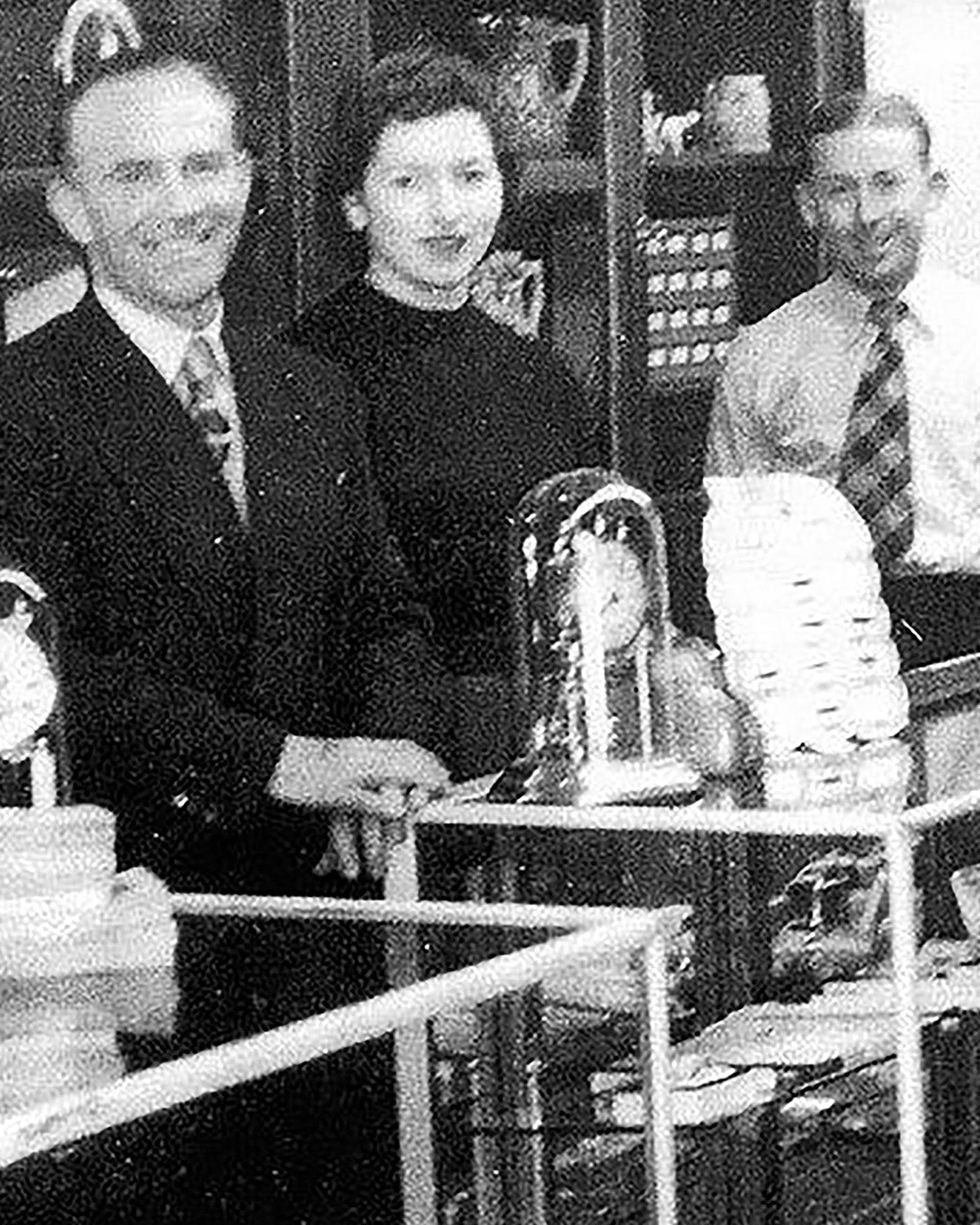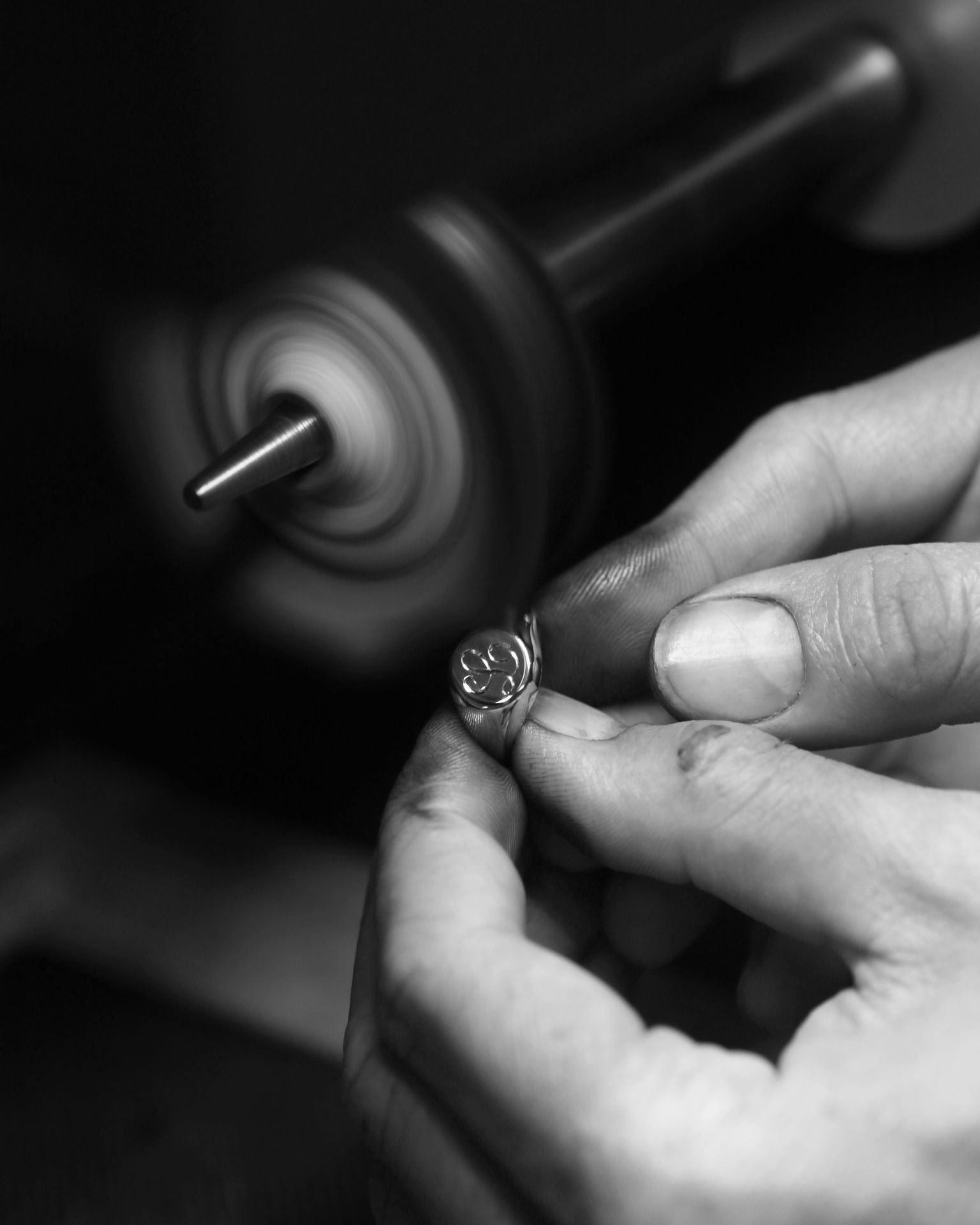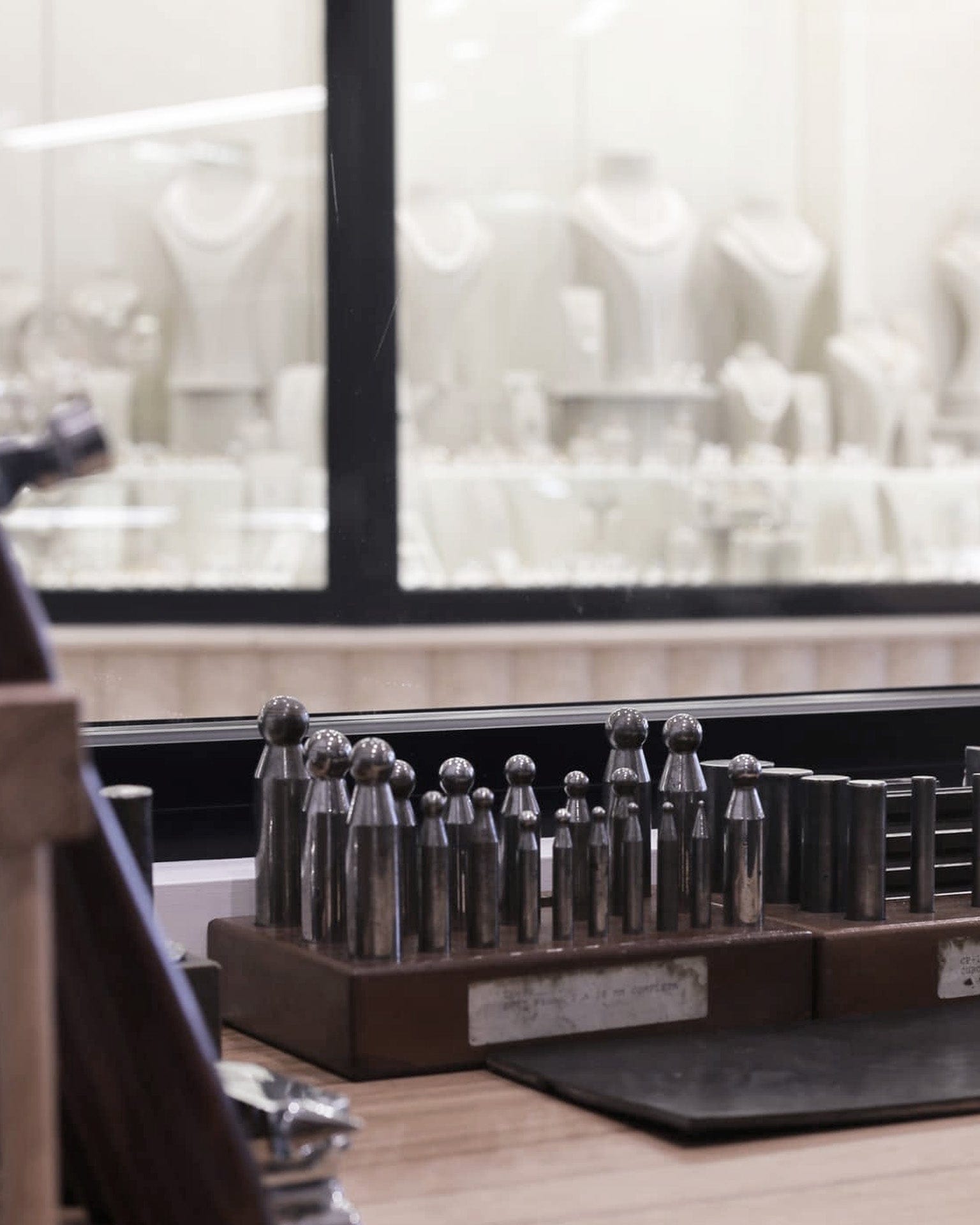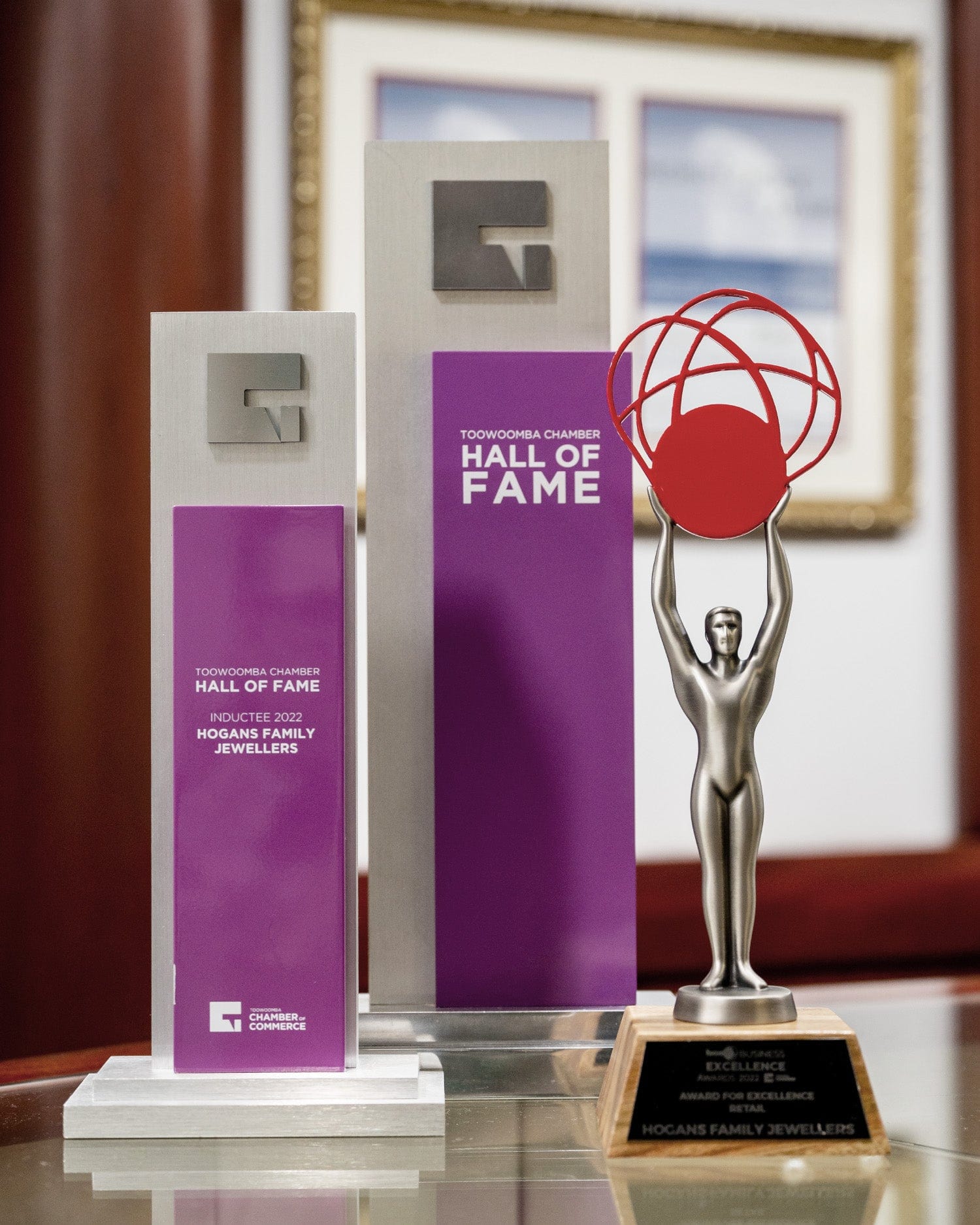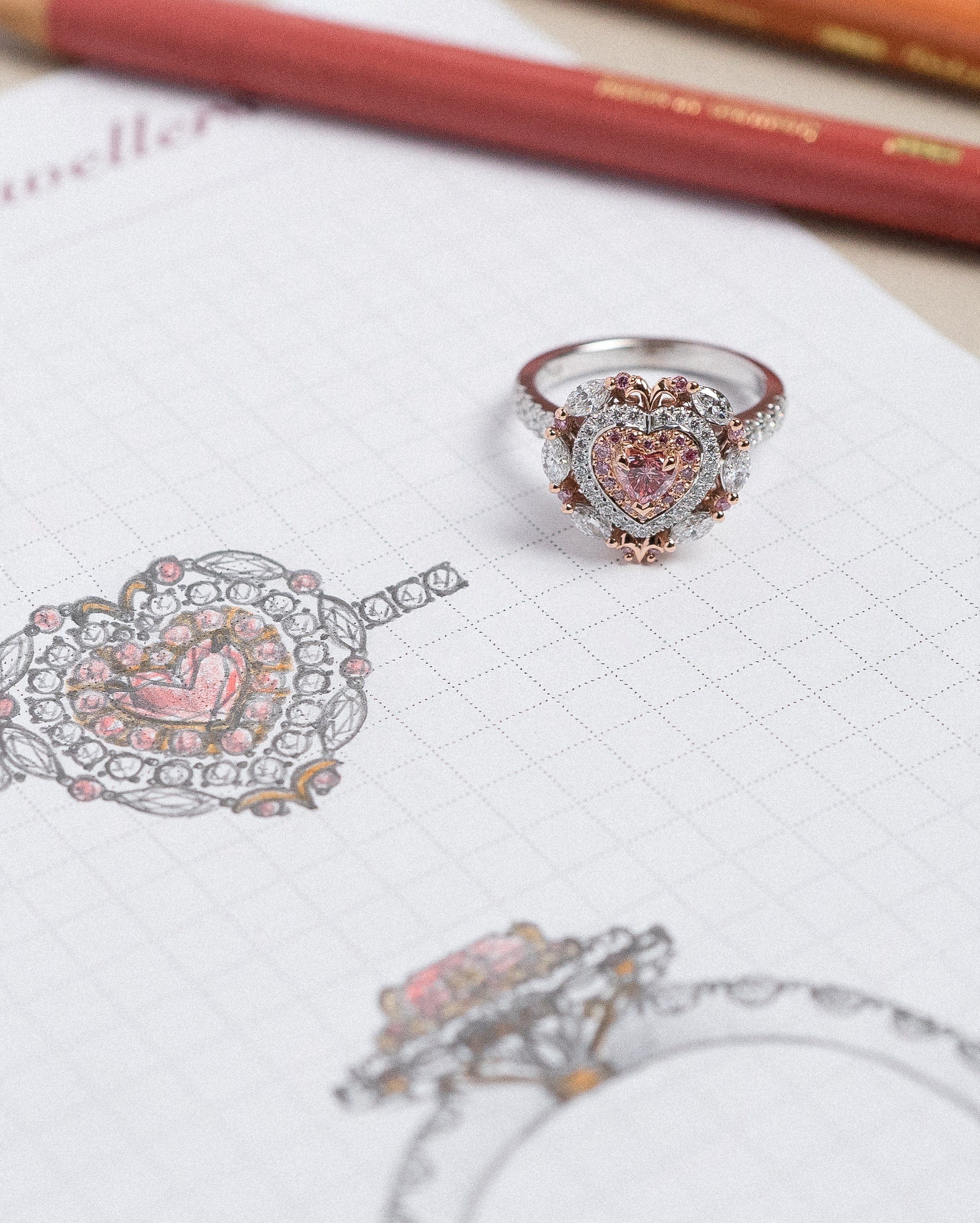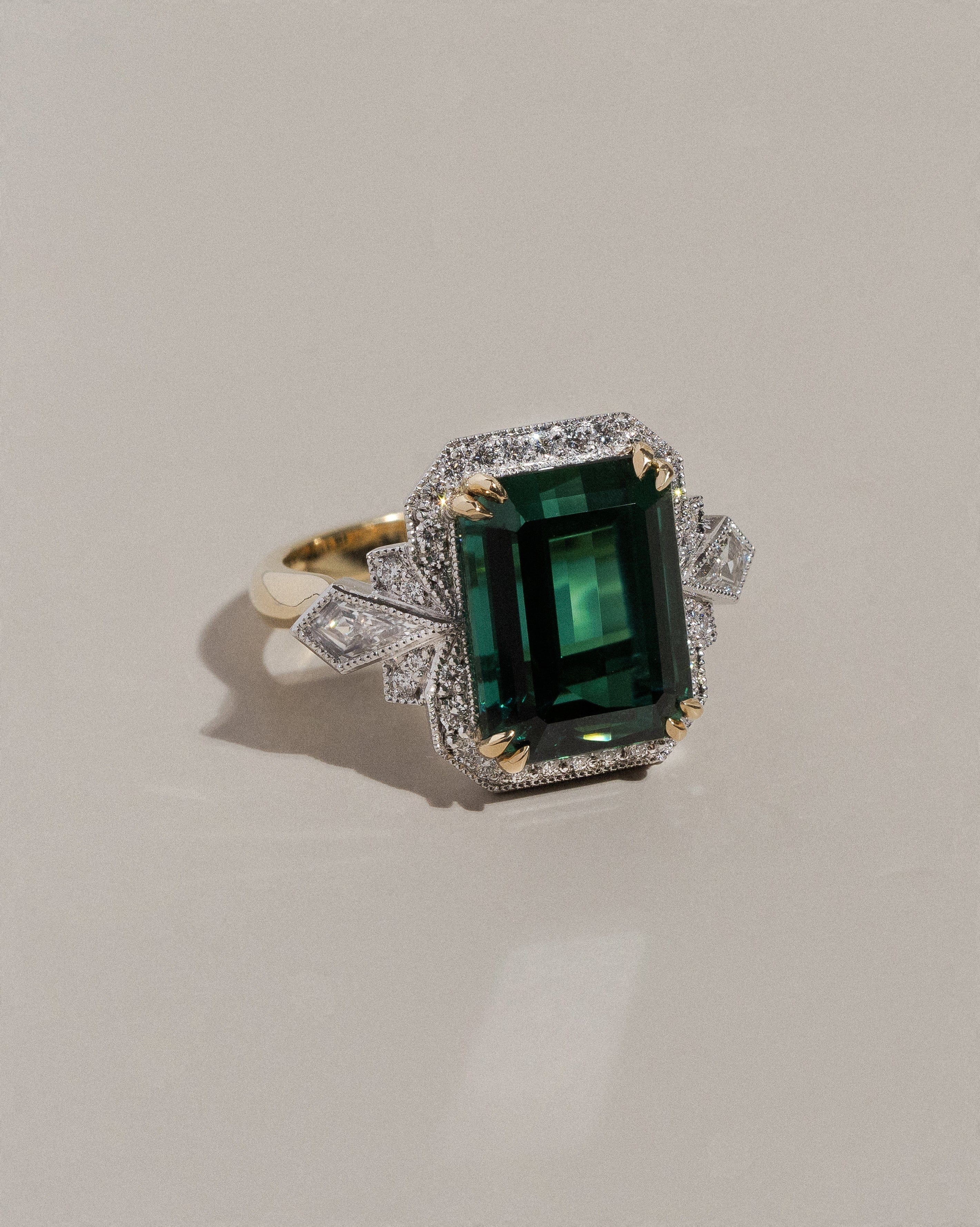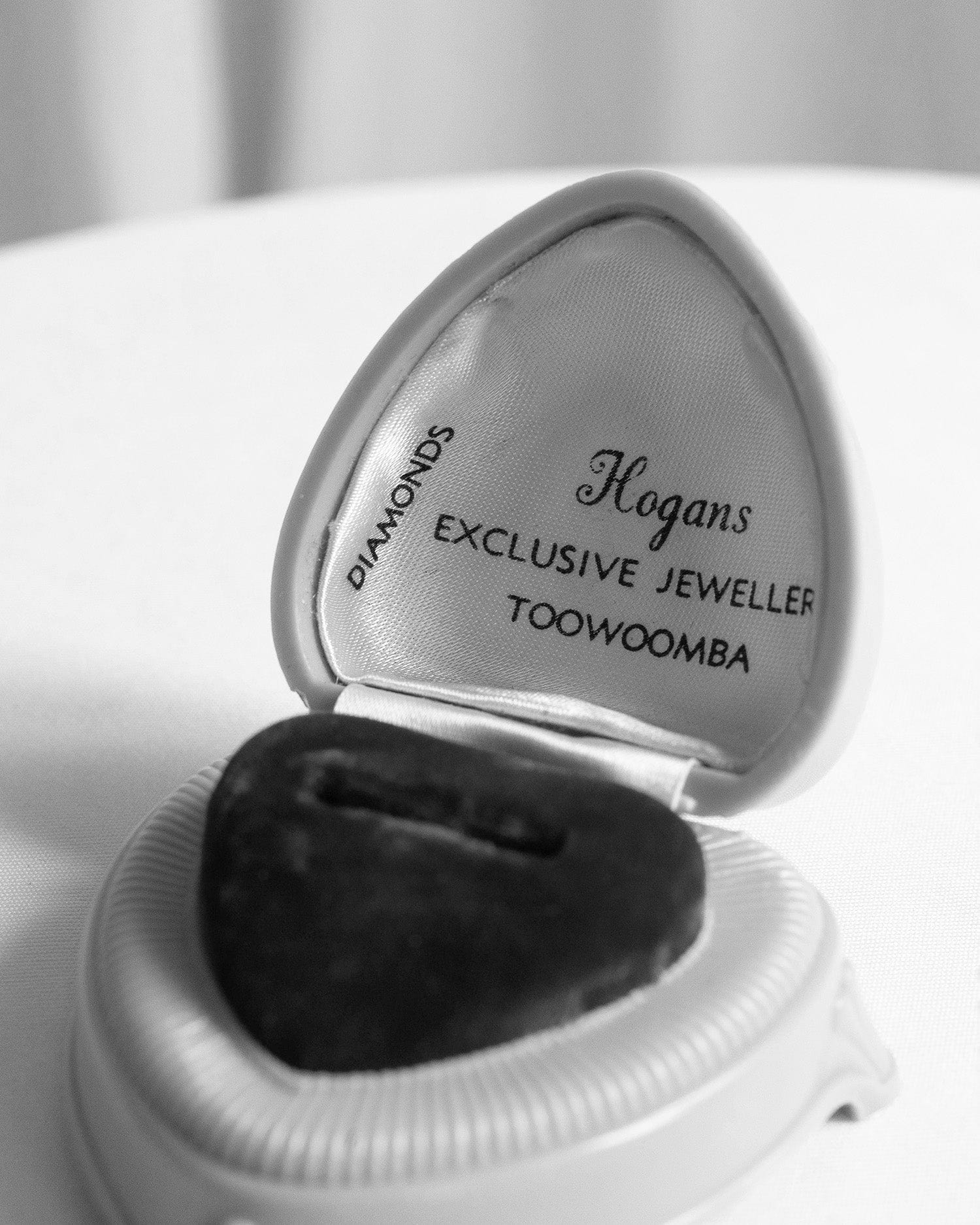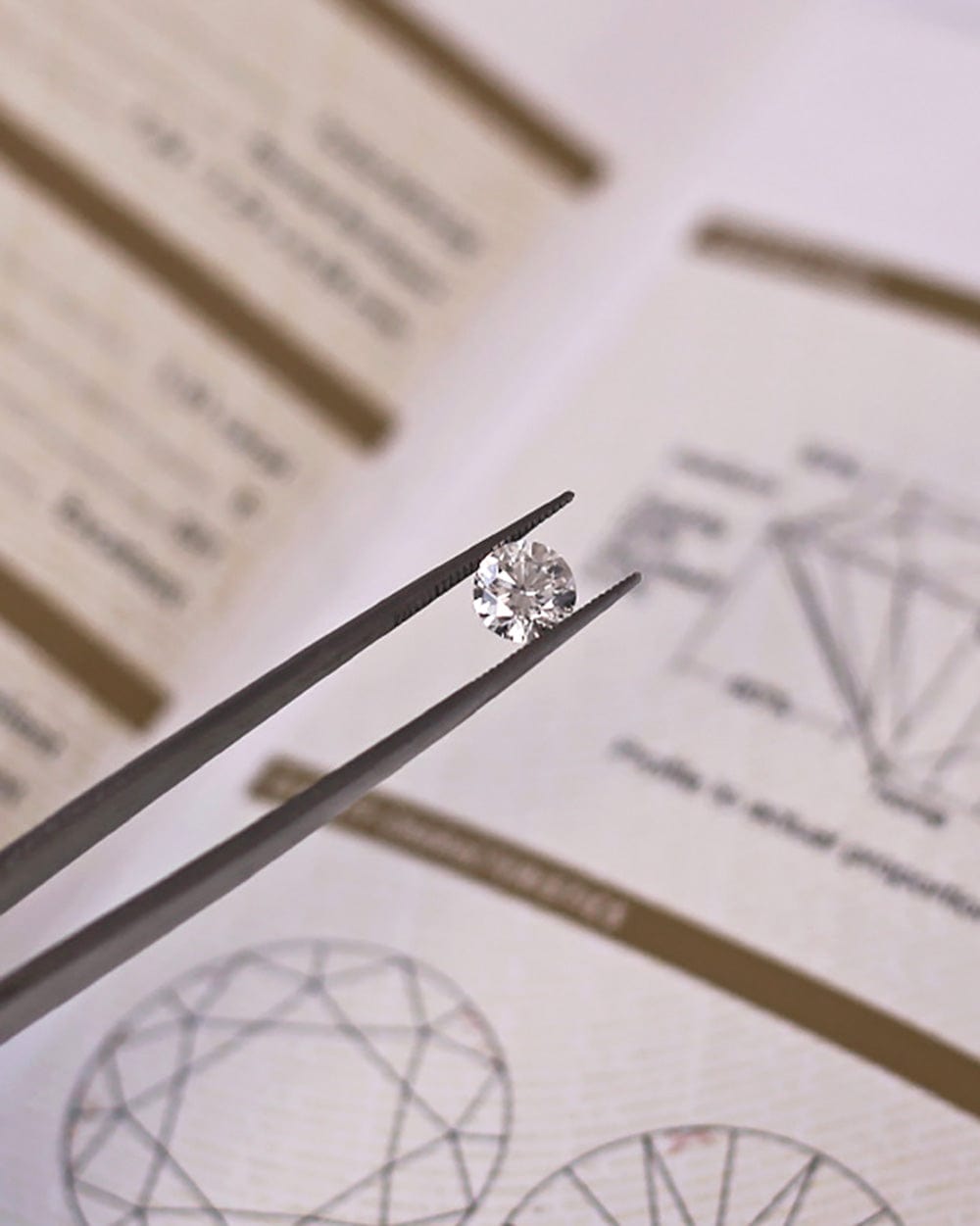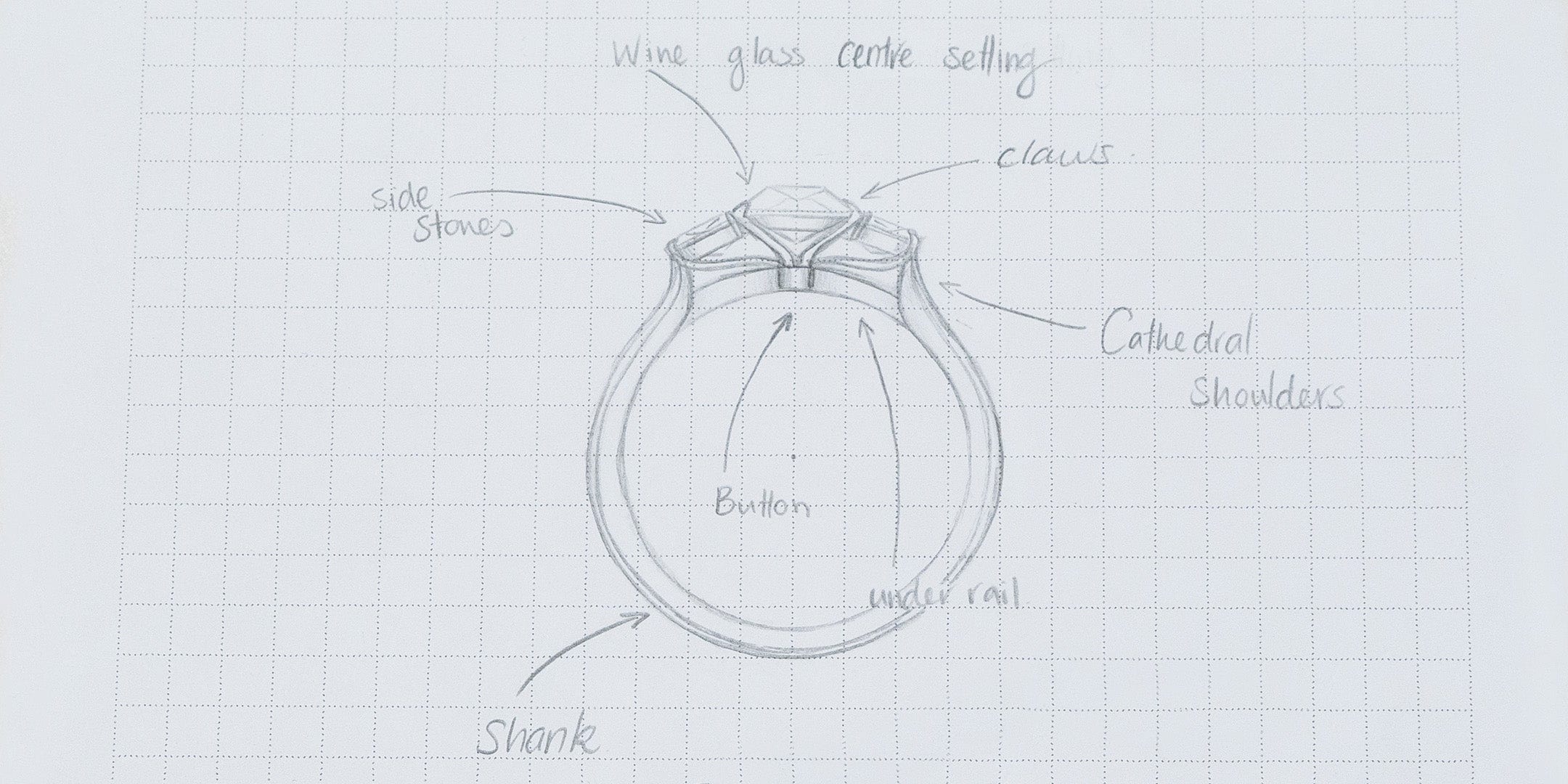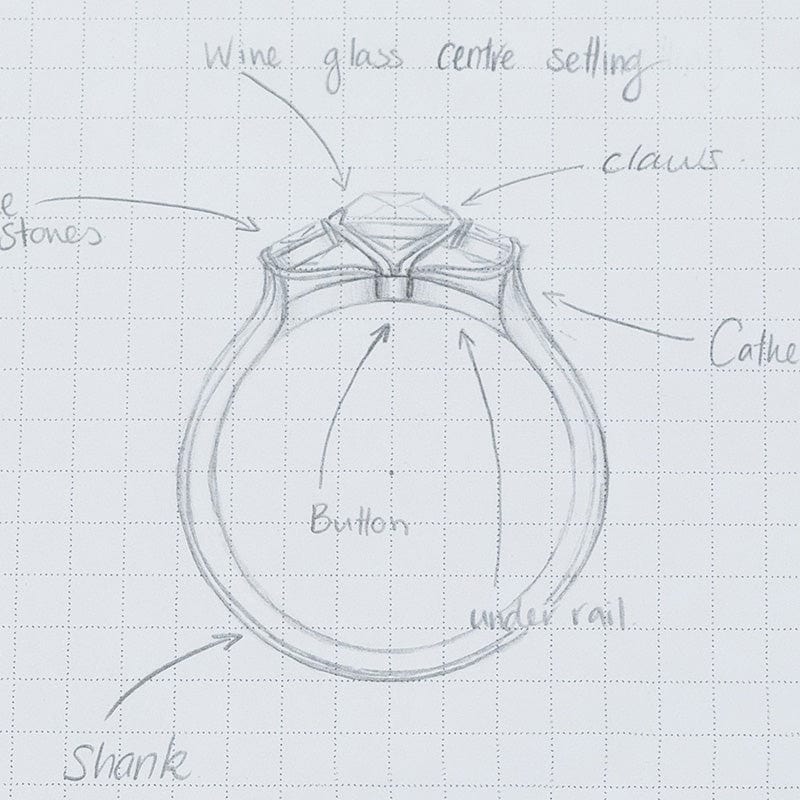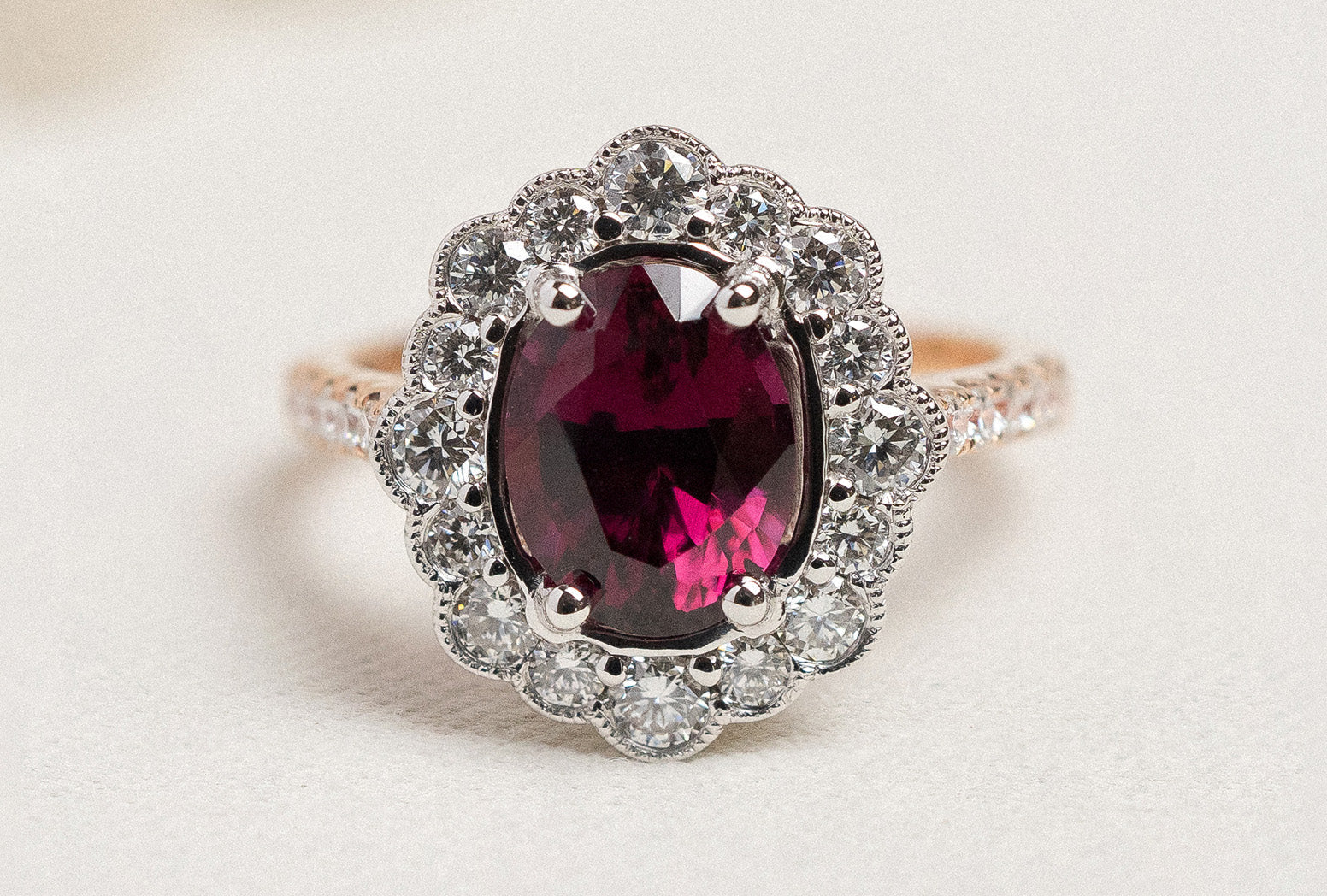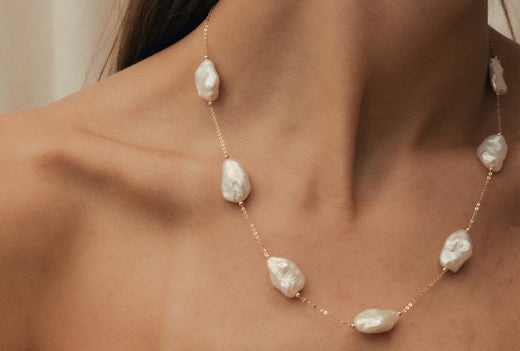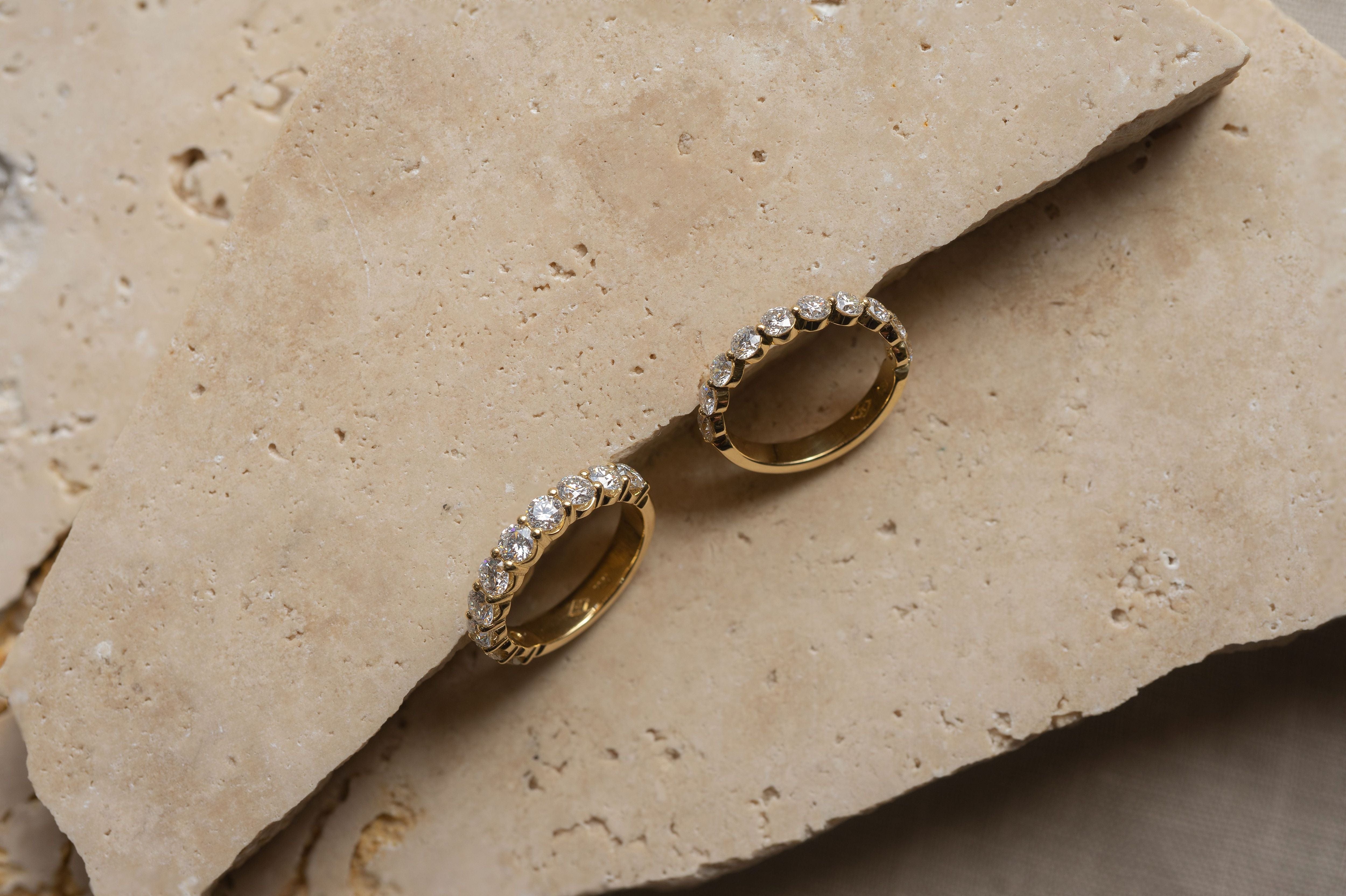An engagement ring is not just a symbol of love and commitment; it’s a work of art that combines various elements of design, craftsmanship, and history. Every aspect of an engagement ring holds significance, whether it’s the choice of the stone, the metal, or the setting. Understanding the anatomy of an engagement ring can help you make an informed choice when selecting a ring for someone special, or simply allow you to appreciate the beauty and craftsmanship that goes into creating such a sentimental piece of jewellery.

1. Centre Stone:
At the core of every engagement ring is the centre stone, usually a diamond, although sapphires, emeralds, rubies, and other coloured gemstones are also becoming popular choices. The centre stone serves as the focal point of the ring, representing the love and commitment between the two individuals.
Diamonds are the most popular choice due to their durability and timeless appeal, but what makes the stone truly unique is the “4Cs” that determine its quality:
Claws, or prongs, on an engagement ring are essential for securing the stones. There are several types and con each offering a distinct look. 4-claw settings provide a classic, minimalistic design, allowing more of the diamond to be visible. 6-claw settings offer added security and a more rounded, symmetrical appearance. V-claws form a pointed shape at the tip, offering a unique, contemporary style while enhancing the diamond's brilliance. Double claws feature two prongs on each corner for extra security and an elegant, detailed look. Each claw type can be customised to suit personal preferences, enhancing both beauty and durability.
5. Underail:
The underrail of an engagement ring refers to the area beneath the band, where the ring's shank meets the underside of the ring's settings. Often overlooked, this feature plays an important role in the overall design and comfort of the ring. A well-designed underrail ensures a smooth, secure fit on the finger while preventing any discomfort. Some rings feature additional design elements, such as small diamonds or intricate detailing, enhancing their aesthetic appeal. The underrail is also essential for the durability and longevity of the ring, providing structural support while allowing the centre stone to sit securely in place.
6. Hallmark & Stamps:
When you purchase a piece of fine jewellery, you're investing in a legacy of craftsmanship, tradition, and authenticity. One of the most important yet often overlooked aspects of jewellery is the hallmark stamp, a tiny yet powerful symbol etched into the precious metal we use.
An engagement ring is more than just jewellery; it is a symbol of love, commitment, and the beginning of a lifelong journey. The anatomy of an engagement ring is composed of multiple elements that work together to create a piece of jewelry that is not only visually stunning but also meaningful. Whether you opt for a classic diamond with a simple band or a more intricate design with multiple stones, the anatomy of an engagement ring tells a story of love that lasts a lifetime. If you're interested in booking a 1:1 engagement ring consultation with one of our award-winning jewellery designers, please visit our booking page.

